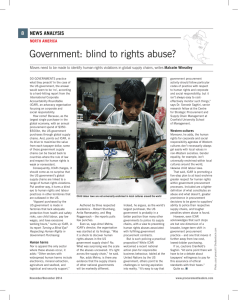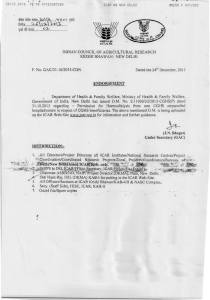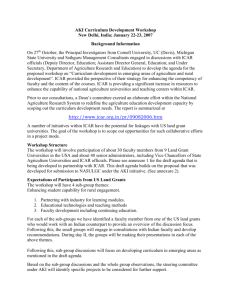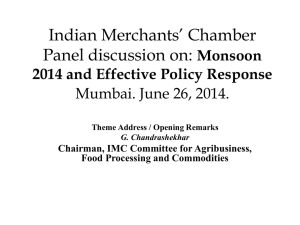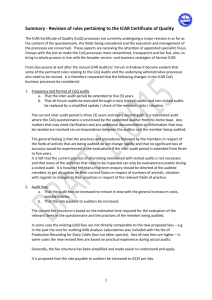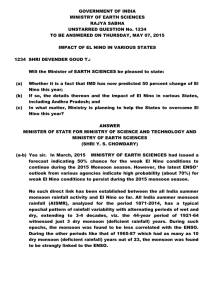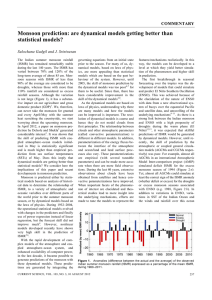Contingency plan to deal with El Nino factor
advertisement
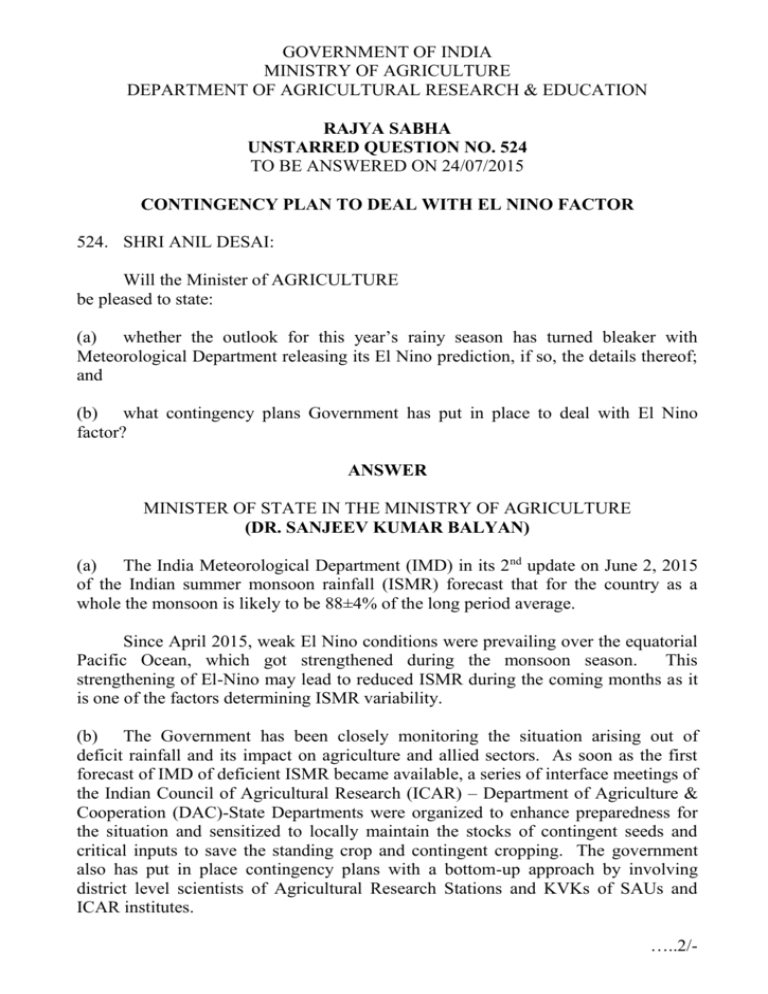
GOVERNMENT OF INDIA MINISTRY OF AGRICULTURE DEPARTMENT OF AGRICULTURAL RESEARCH & EDUCATION RAJYA SABHA UNSTARRED QUESTION NO. 524 TO BE ANSWERED ON 24/07/2015 CONTINGENCY PLAN TO DEAL WITH EL NINO FACTOR 524. SHRI ANIL DESAI: Will the Minister of AGRICULTURE be pleased to state: (a) whether the outlook for this year’s rainy season has turned bleaker with Meteorological Department releasing its El Nino prediction, if so, the details thereof; and (b) what contingency plans Government has put in place to deal with El Nino factor? ANSWER MINISTER OF STATE IN THE MINISTRY OF AGRICULTURE (DR. SANJEEV KUMAR BALYAN) (a) The India Meteorological Department (IMD) in its 2nd update on June 2, 2015 of the Indian summer monsoon rainfall (ISMR) forecast that for the country as a whole the monsoon is likely to be 88±4% of the long period average. Since April 2015, weak El Nino conditions were prevailing over the equatorial Pacific Ocean, which got strengthened during the monsoon season. This strengthening of El-Nino may lead to reduced ISMR during the coming months as it is one of the factors determining ISMR variability. (b) The Government has been closely monitoring the situation arising out of deficit rainfall and its impact on agriculture and allied sectors. As soon as the first forecast of IMD of deficient ISMR became available, a series of interface meetings of the Indian Council of Agricultural Research (ICAR) – Department of Agriculture & Cooperation (DAC)-State Departments were organized to enhance preparedness for the situation and sensitized to locally maintain the stocks of contingent seeds and critical inputs to save the standing crop and contingent cropping. The government also has put in place contingency plans with a bottom-up approach by involving district level scientists of Agricultural Research Stations and KVKs of SAUs and ICAR institutes. …..2/- -2District level contingency plans (600 districts) covering contingency strategies were disseminated to the extension agencies and farmers on major weather related aberrations such as delay in onset and breaks in monsoon causing early, mid and late season droughts, flood, unusual rains, extreme weather events such as heat wave, cold wave, frost, hailstorm and cyclone is available at www.crida.in and www.agricoop.nic.in. Further, ICAR issued state level advisories on suitable seed varieties, effective in situ and ex situ rain water conservation methods and cultural practices to effectively manage the crops at different growth stages under deficient monsoon situation. The information is available at ICAR website www.icar.gov.in. Besides, National Agromet Advisory Service Bulletins jointly prepared by IMD, ICAR and Indian Institute of Tropical Meteorology (IITM) are being issued fortnightly. *******
